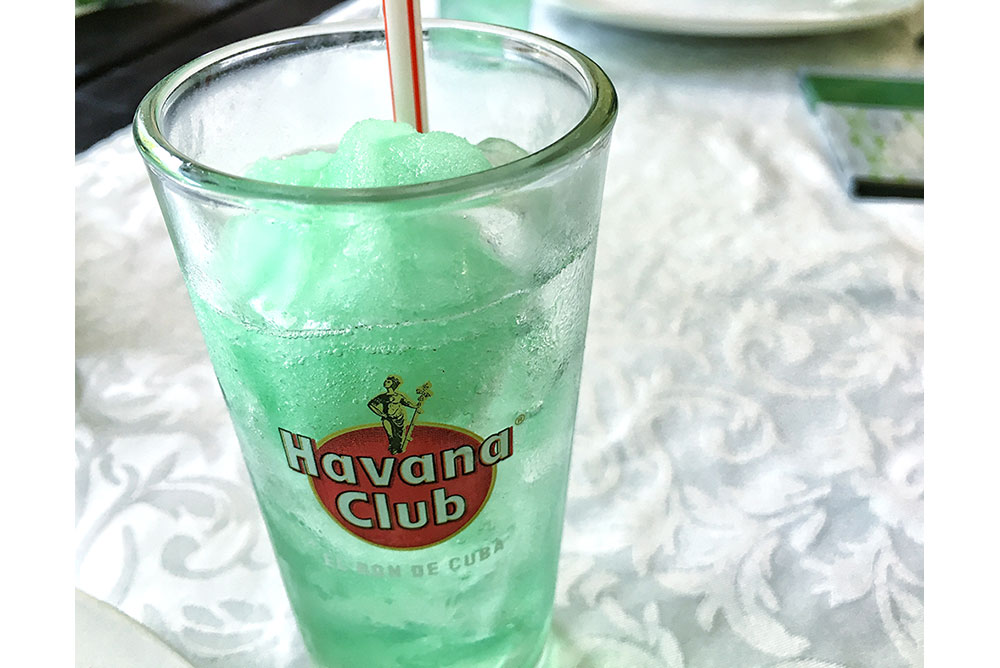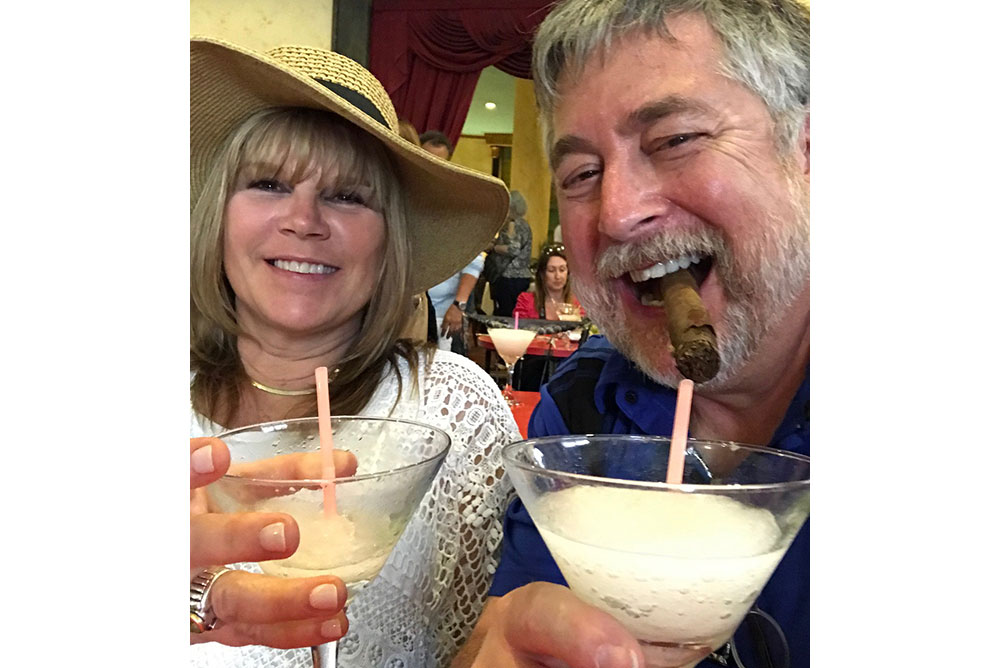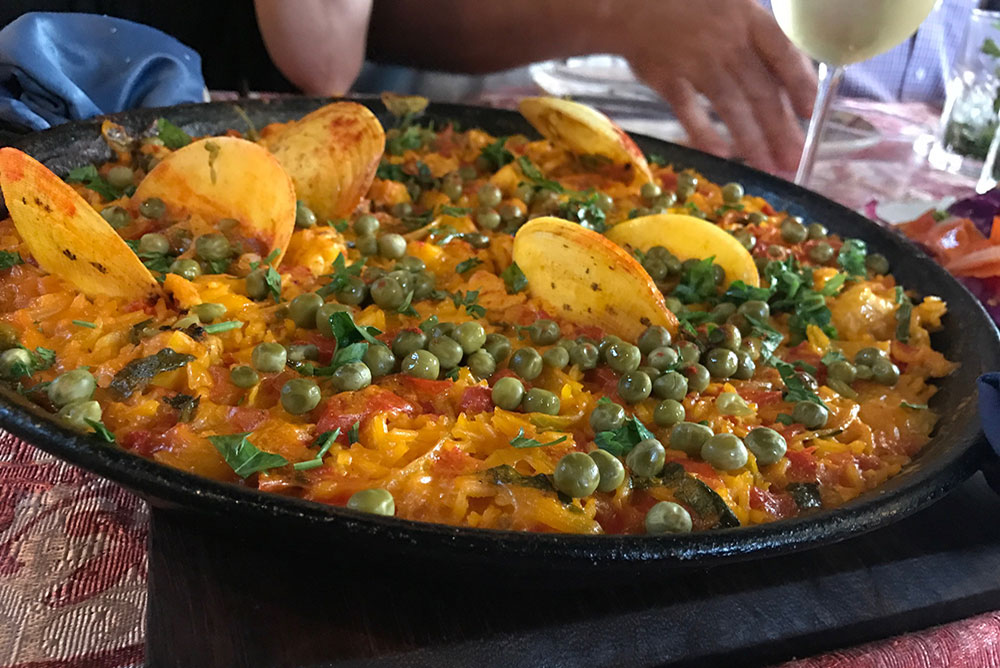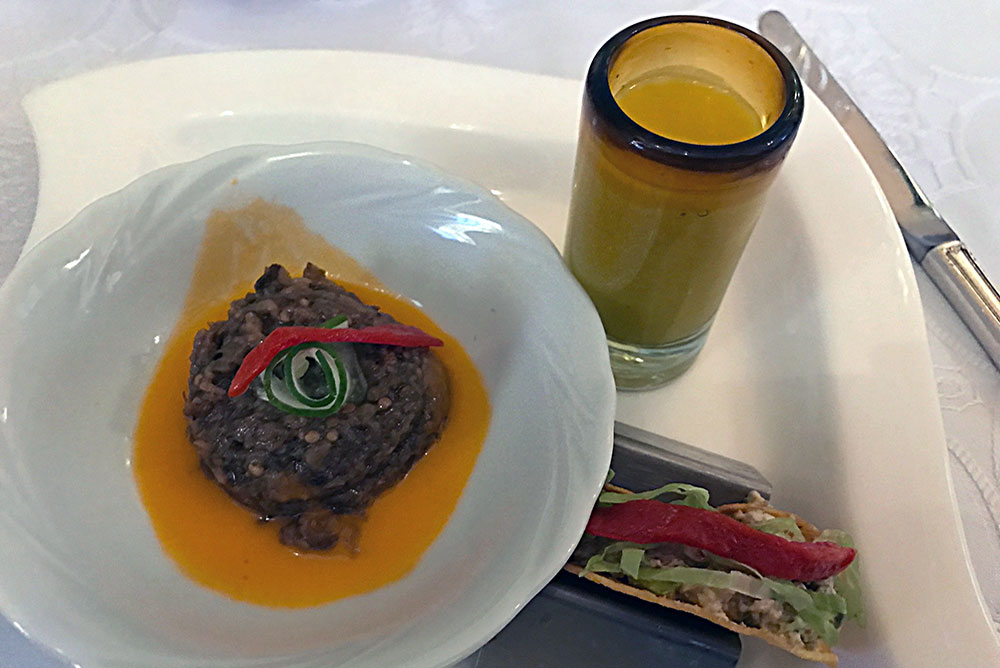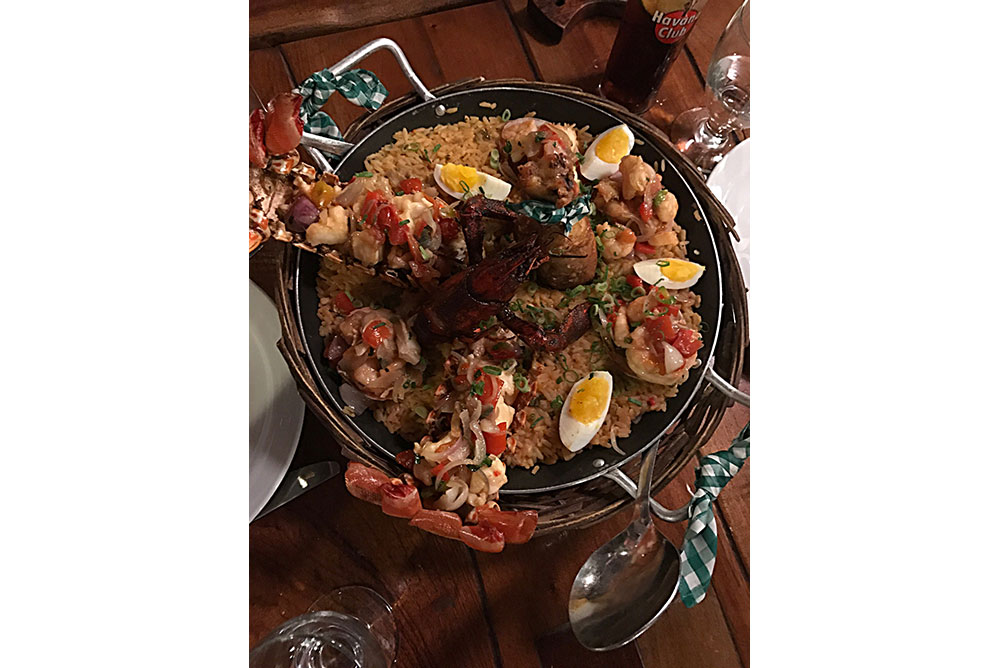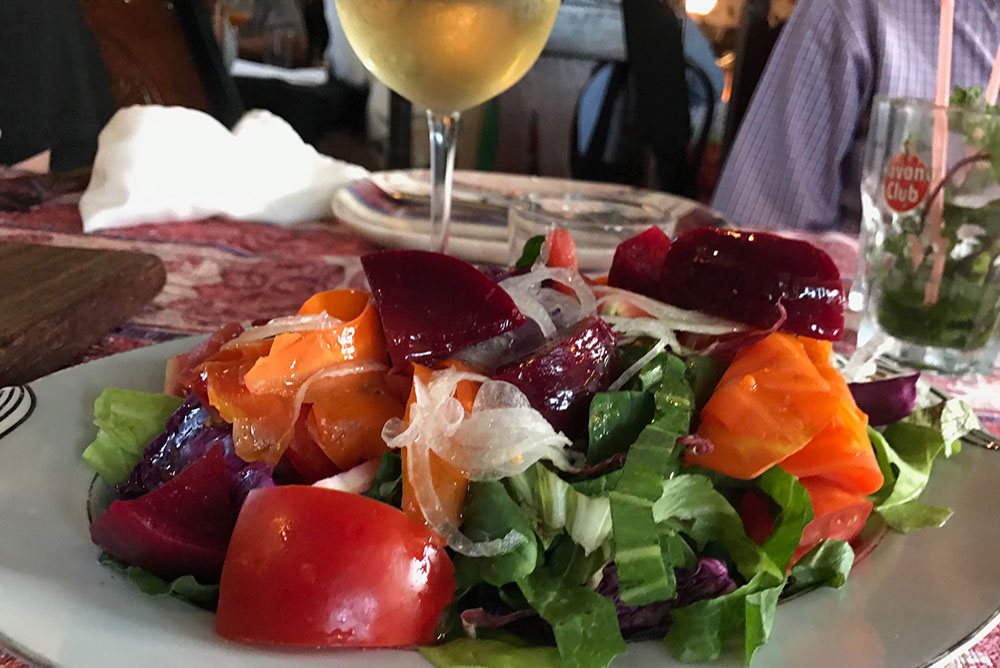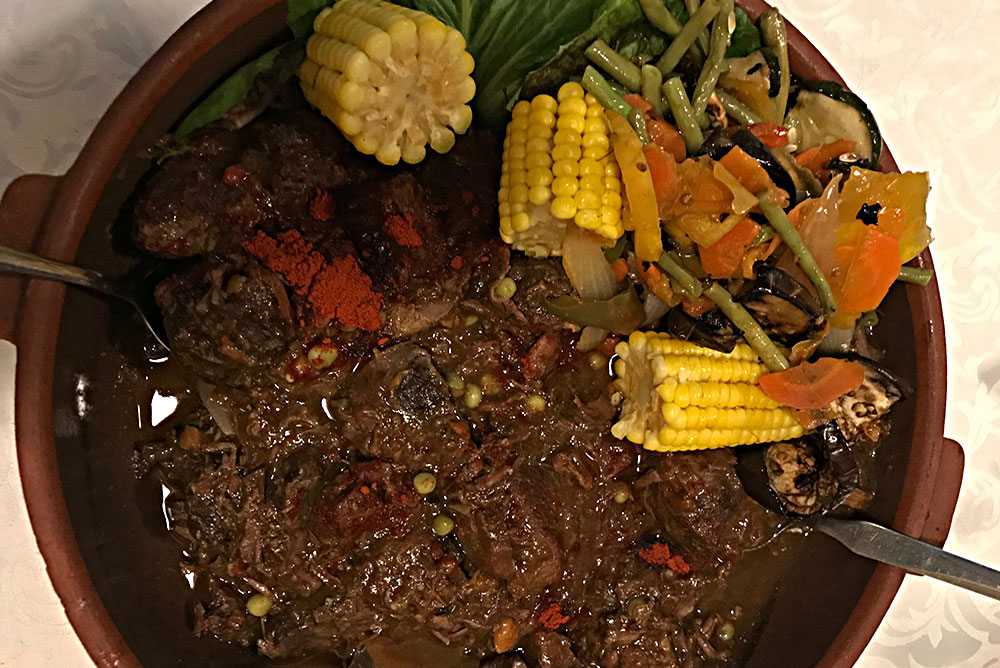Cuba Eats
IT’S A MARCH MORNING and the waves are crashing convincingly against the Malecón, Havana’s seawall and seaside stroll. Above, the clouds scud by, slightly gray but somehow not menacing. My main thought isn’t, This is amazing, I’m in Cuba, the forbidden island.
Instead, my thought is, Where are we going for lunch?
I signed up for a culinary cultural exchange tour, almost on a whim. Lots of people have been curious about Cuba, that mysterious land 93 nautical miles off Key West, Florida. Three of my friends have even traveled there. But I think what lit a fire under me was LittleBird Stephanie’s trip to the island to mark a landmark birthday of her husband, The Prince.
As it happened, in early March I was surfing online for Philadelphia restaurant info, and ran across the homepage of
Cuba Libre restaurant. A picture of people clearly having a wild ride in a vintage car was headlined “Come to Cuba With Us.”
Why not, I said to myself.
Guillermo Pernot, chef and partner in the restaurant, which has
a branch in Washington DC, was hosting a trip in two weeks. A quick email and phone call to
CulturalContrast.org, which was coordinating the trip, and some exchange of documents and money, and I was one of the dozen folks headed for Havana.
Pernot, who hails from Argentina and whose wife is Cuban, has made this trip at least 20 times; this was the sixth restaurant-sponsored trip. Despite recent loosening of regulations, the US Treasury still requires a legitimate reason for Americans to make the trek. A people-to-people cultural exchange is one of those reasons (others include “aid to the Cuban people,” mission work, medical assistance, family visit).
Pernot takes the “cultural exchange” idea seriously. And so we were shuttled to paladares—those are the private restaurants in old villas and baroque downtown buildings opened by entrepreneurs with the blessing of a Cuban government that wants to somewhat loosen its hold on the island’s economy, not to mention bring in hard currency.
Pernot has made fast friends of many chefs and paladar owners—we ate one evening on the romantic trellised patio of Cocina de Lilliam, Liliam herself having been one of the first 14 licensees years ago. But don’t be limited by the list of places where Chef Pernot took us—there seem to be hundreds of paladares, some good, some not so good, some great. But it would take a year of tasting to sort it all out.
Dodging a March snowstorm that closed down much of the Northeast, we arrived—from Cleveland, Dallas, Long Island, Virginia and Pennsylvania—in Havana in time for dinner. Many tourists now find accommodations in
casas particulares, homes whose owners are licensed to rent out rooms, many on
Airbnb (there seem to be hundreds of those as well in Havana and across the island). But we were booked into the Hotel Nacional de Cuba, the storied hotel of the Havana Conference, the 1946 summit meeting of the American Mafia and the Cosa Nostra. (The “Mafia” room is No. 210, says the hotel.)
There’s no doubt that Cuba in the 1940s and ’50s was the playground of Americans looking for a beach and gangsters controlling gambling and narcotics distribution. Having ” ’50s ” stuck in my head, I expected slightly dowdy mid-century modern; instead the hotel is slightly dowdy Grande Dame hotel, and those old bones, constructed in 1931, hold up a lot better (it reminded me of the Agatha Christie hotel in Istanbul, the Pera Palace, before its renovation).
I wasn’t prepared for our first dinner, at Atelier (pronounced in Spanish as at-tell-YEHR). The exterior stone staircases promised age, but the long room was sleek and spare; enormous images hung on a few walls. We debated endlessly about the one nearest us: Was it a photo or a painting? Whichever it was, was the subject a sea creature or some manmade thing? (Turned out it was indeed a photo, a closeup of the detached sole of an athletic shoe.)
One incongruity in all this sleekness: a unlikely stack of vintage radios and a couple of heavy wooden wall clocks. I would soon identify the decorative themes running through many Havana restaurants.
The first thing to greet us at our long table—and this became almost a running gag—was a mojito, that sweet, sweet drink made with Cuban rum (of course), sugar, lime juice and muddled mint.
There was plenty of time to get acquainted with one another while we waited for colorful platters of food—lobster, chicken, fish, rice and beans, assorted vegetables and salads—to be delivered to us. Maybe I wasn’t paying attention, but I don’t remember seeing menus at any of “our” restaurants (although they do exist); being a large group, we simply had platter after platter of the chefs’ finest keep coming. La Guarida restaurant was notable for serving individual appetizer portions of its signature Eggplant Caviar, but most of the food wherever we went was served family-style.
With the collapse of the Soviet Union and no hope of aid from a chaotic Venezuela, Cuba IS FRESH OUT OF patrons. So Cuba turned to a known source of hard currency, tourists, especially American tourists, many of whom want to visit the island-nation “before it’s ruined,” meaning by more tourists like us.
But tourism so far seems to be drinking up the lively Afrho-Cuban culture without despoiling it.
Not to worry: Although there is a lot of thoughtful restoration going on, entire blocks of crumbling old buildings remain–not faded grandeur but scenes of devastation such as what one would see in news photos out of Syria.
government restaurnta tends to be bigger, more elegant, more traditional
Star burn resto–their version of amojto–Sprite and mint sorbet–no rum
new restaurants can’t afford to take bg groups because it takes 90 days for the government to pay them and they can’t afford that kind of wait
El Carbon–chili and rum, chicken and rice strew
mass tourism started in cuba in 1994. before that cuba was a playground for american companies
70,000 (?) chefs in cab all contributed to establish the Artechef Restaurant project. Zanussi the italian appliance company provided equipment (in US Zanussi is Electrolux)
mojito invented in 1910, hemingway its unofficial ambassador
mint family–yerba buena
any white rum–45 milliliters less than 2 oz
1 tp sugar
7.5 milliliters lime juice
sparkling water
ice
crush the stem of the yerba
this one version–add 3 drops of Angostura bitters
Earlier drink, the canchancha, may be the antecedent to the mojito
La Guarida
starters–then their signature eggpplant caviar, callback squash soup, fish taco, then pork
‘Before it changes”
